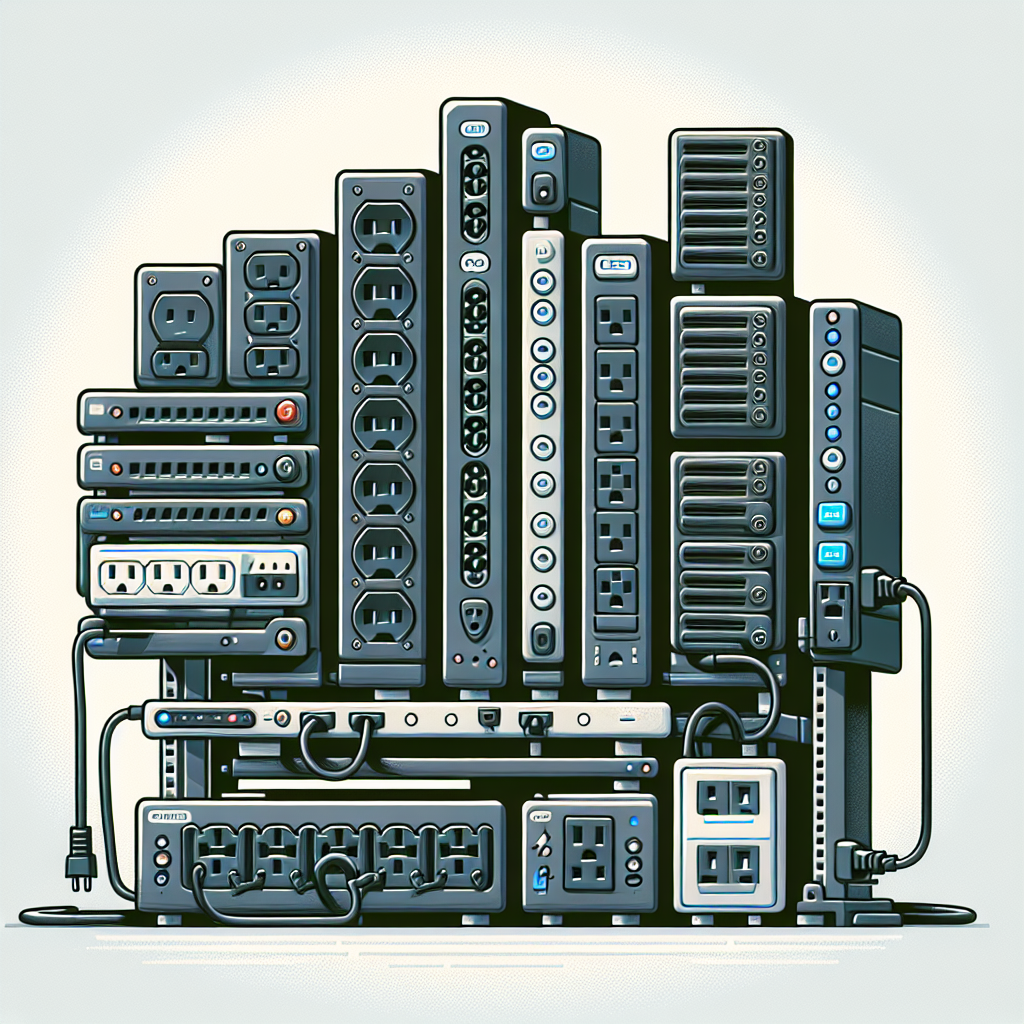Choosing the right rack-mount power strip is crucial for ensuring that your data center or server room operates efficiently and safely. With numerous options available, it can be challenging to determine the best fit for your specific requirements. This guide provides a detailed overview of the key factors to consider, helping you make an informed decision.
Key Considerations When Choosing a Rack-Mount Power Strip
1. Power Requirements
Determine your power requirements by assessing the total power consumption of the devices you plan to connect. Ensure that the power strip can handle the combined wattage of all connected equipment.
| Device Type | Estimated Wattage |
|---|---|
| Server | 300-500W |
| Network Switch | 50-100W |
| Storage Device | 100-150W |
2. Number of Outlets
It’s essential to have a sufficient number of outlets on your power strip. Consider both your current and future expansion needs to avoid running out of outlets as you add more equipment.
3. Outlet Types
Different devices may require various types of outlets, such as C13, C19, or standard NEMA outlets. Ensure the power strip provides the outlet types compatible with your devices.
4. Surge Protection
Surge protection is vital for safeguarding your equipment from voltage spikes and electrical surges. Look for a power strip with built-in surge protection to protect your valuable devices.
5. Voltage and Amperage Ratings
Power strips come with different voltage and amperage ratings. Confirm that the ratings of the power strip align with the voltage and amperage requirements of your devices.
| Rating | Typical Use |
|---|---|
| 120V/15A | Standard office equipment |
| 208V/30A | High-density servers |
6. Mounting Options
Rack-mount power strips come in various mounting configurations, including horizontal and vertical mounts. Choose the one that best fits your rack setup and optimizes space utilization.
7. Build Quality
The build quality of the power strip affects its durability and reliability. Look for power strips made from robust materials that can withstand the rigors of a data center environment.
8. Monitoring and Management Features
Advanced power strips offer monitoring and management features, such as remote access and energy usage tracking. These features can help you manage power consumption more effectively and identify potential issues early.
9. Redundancy and Failover
For critical applications, consider power strips with redundancy and failover capabilities. These features ensure continuous power supply, even if one power source fails.
10. Compliance and Certifications
Ensure that the power strip complies with relevant industry standards and certifications, such as UL, CE, and RoHS. Compliance ensures safety and reliability.
Conclusion
Choosing the right rack-mount power strip involves assessing your power requirements, considering the number and types of outlets, and evaluating additional features like surge protection, build quality, and monitoring capabilities. By carefully considering these factors, you can select a power strip that meets your current needs and can adapt to future expansions, ensuring the reliable operation of your data center or server room.

